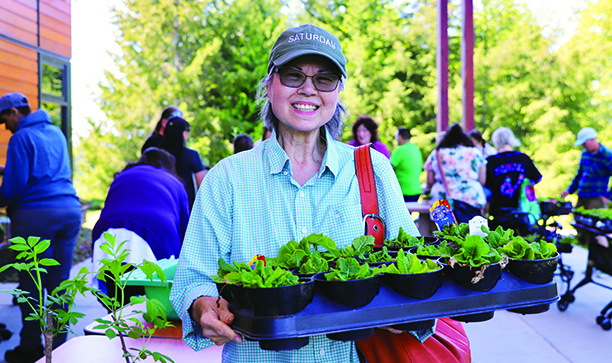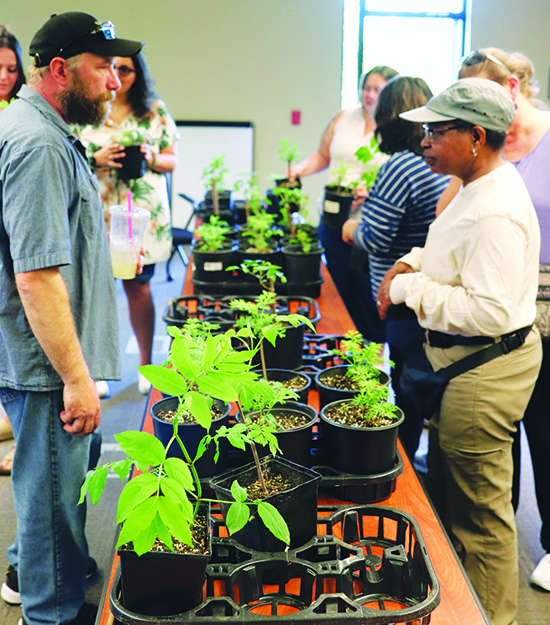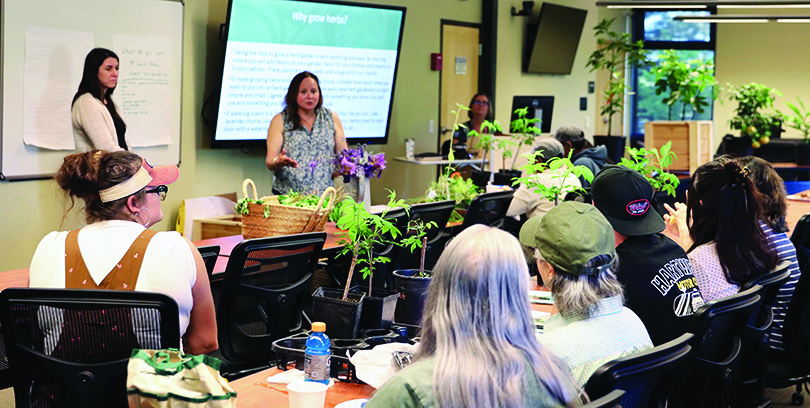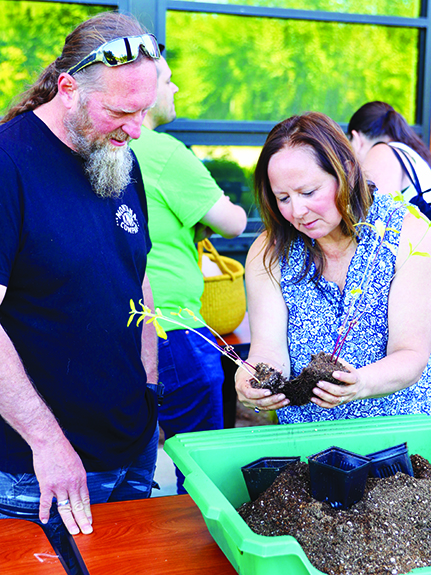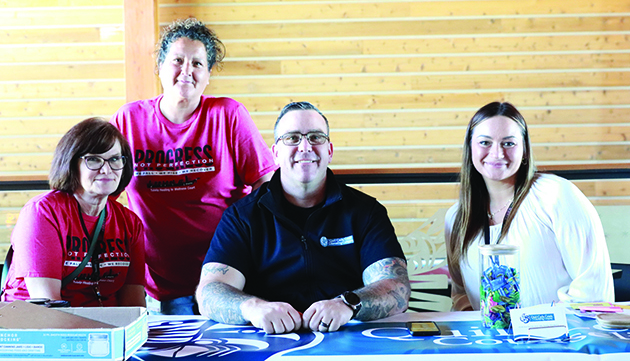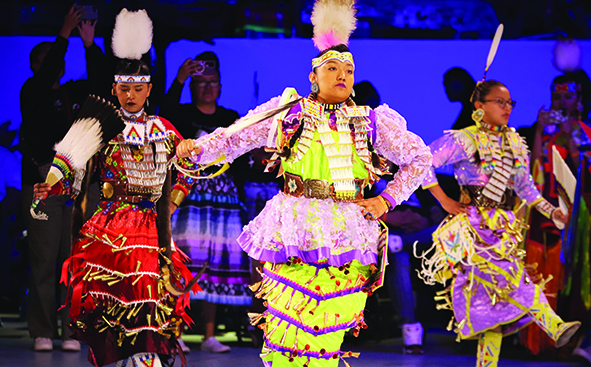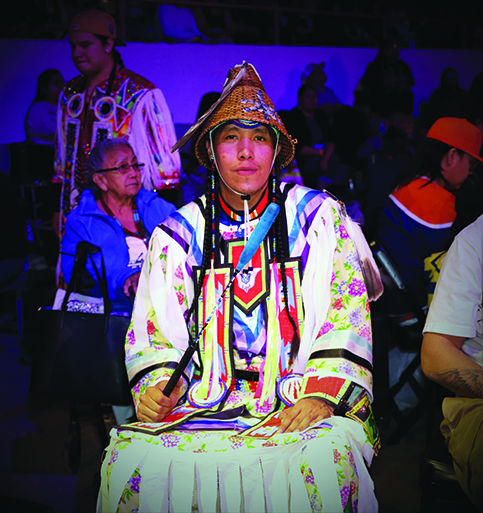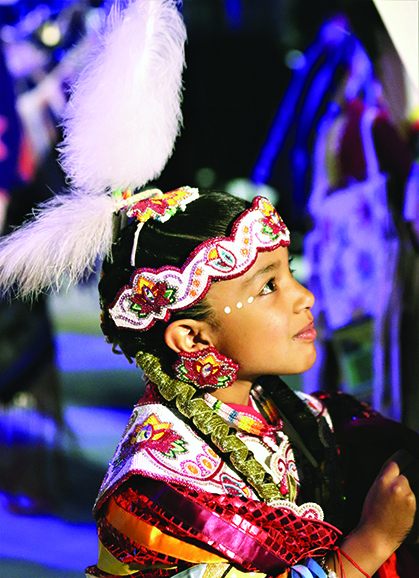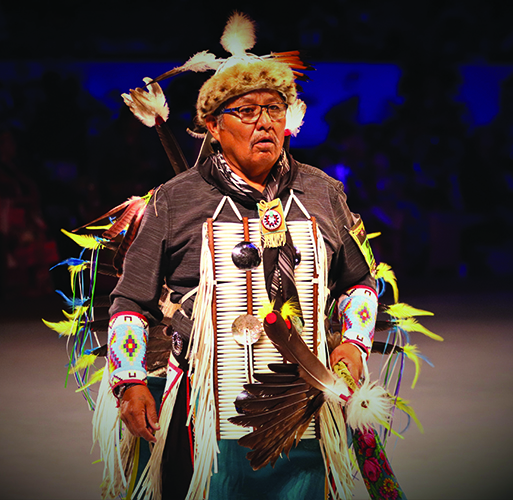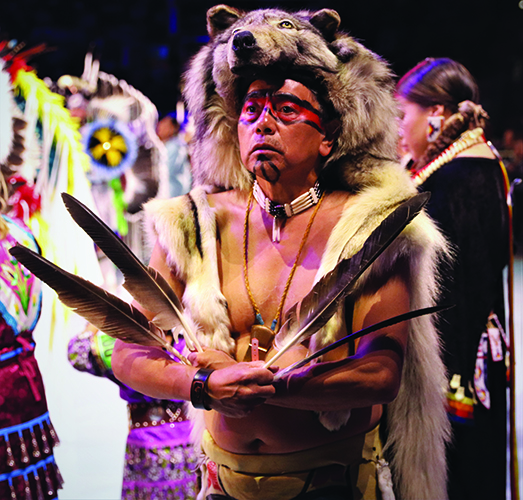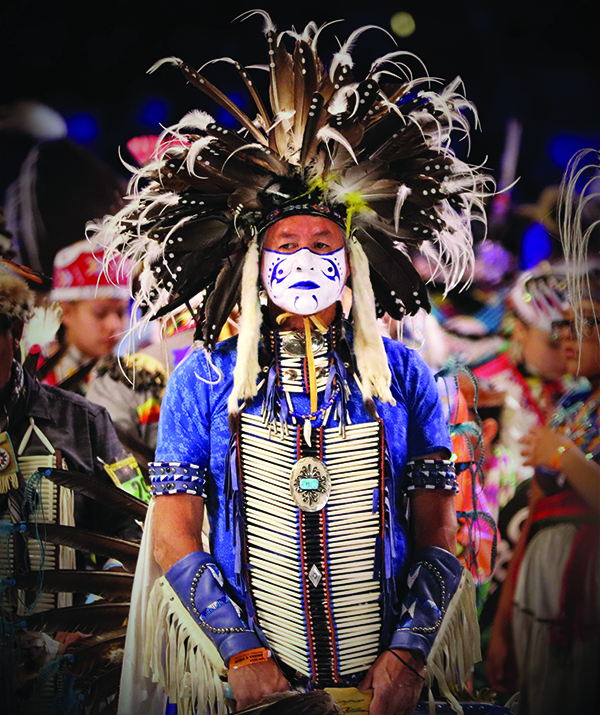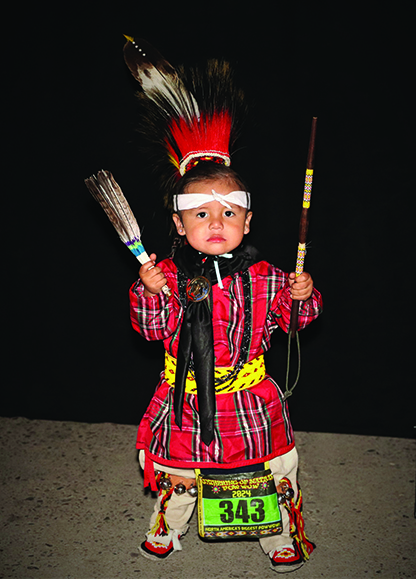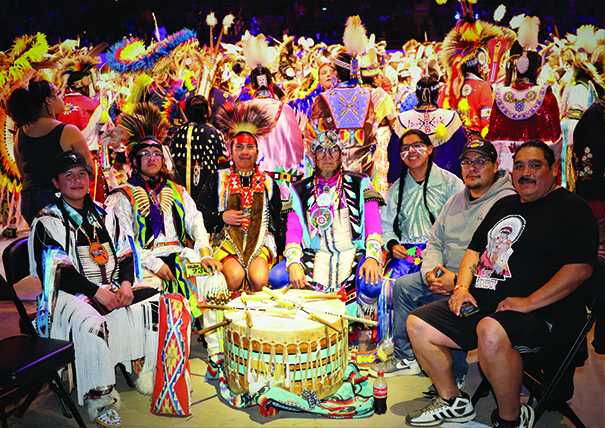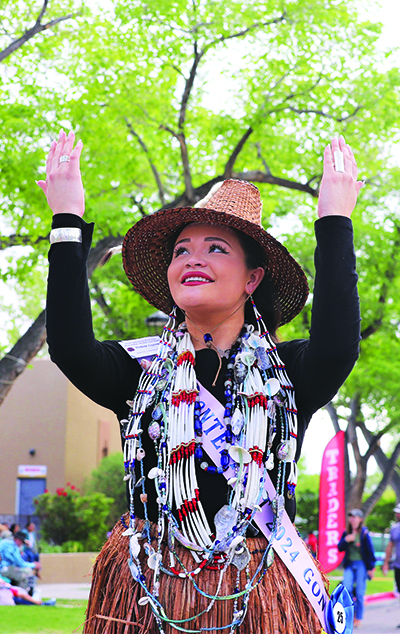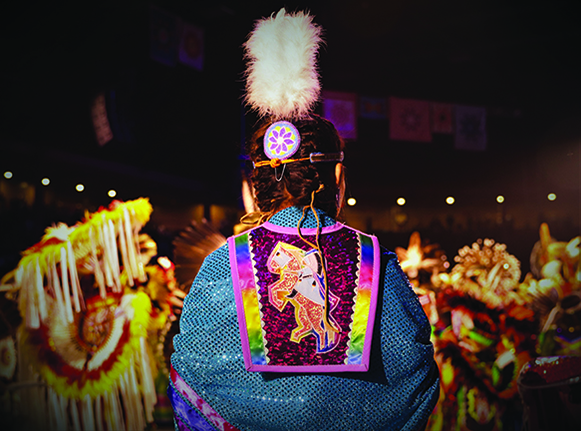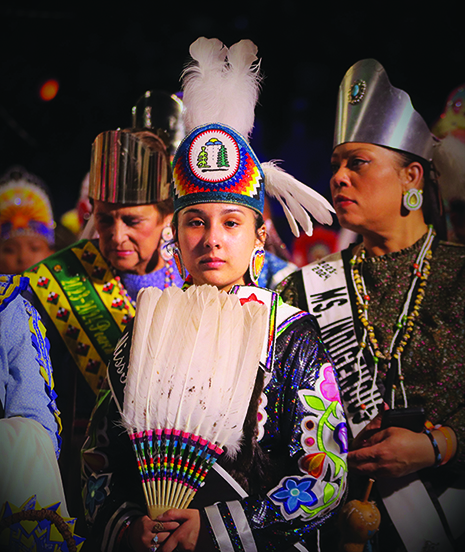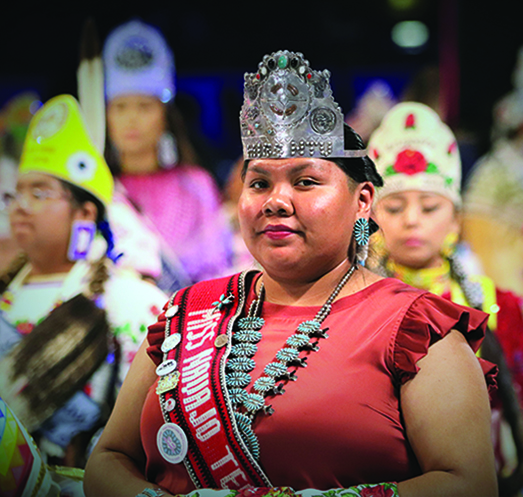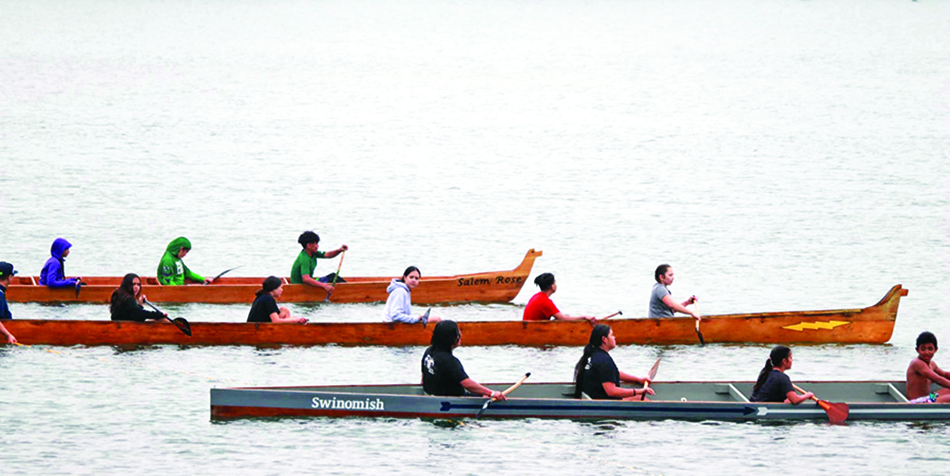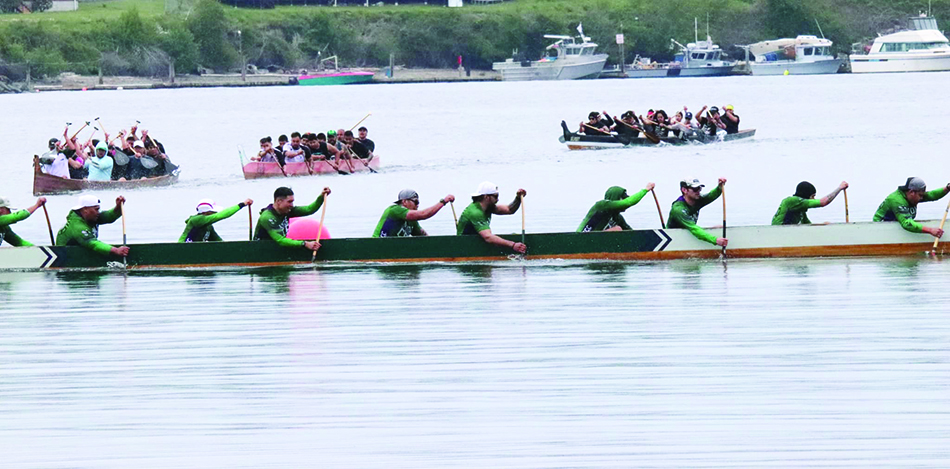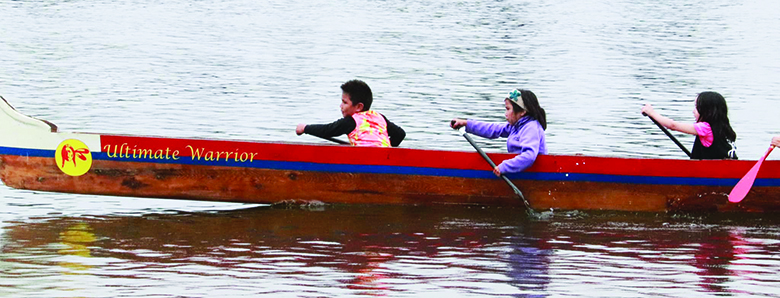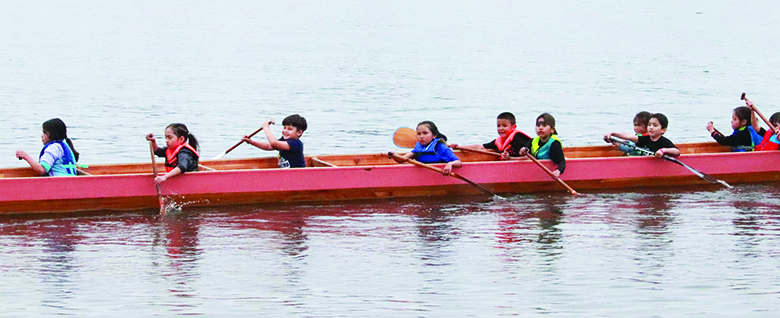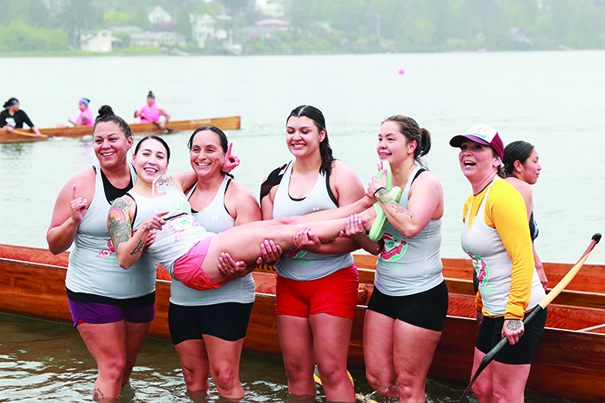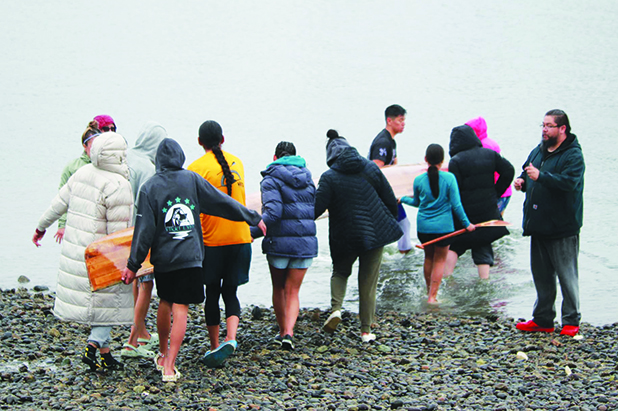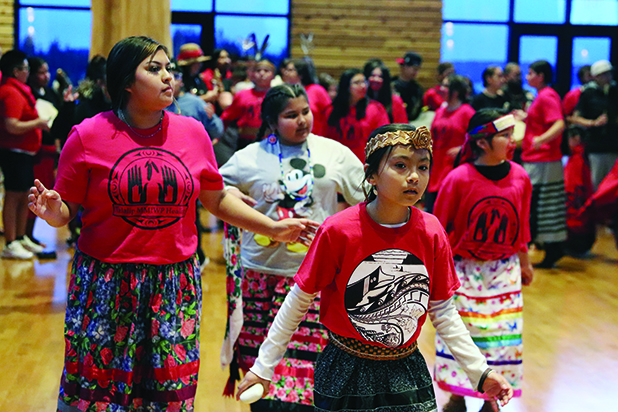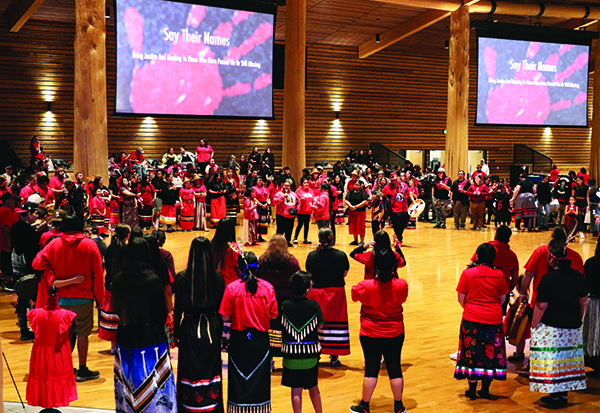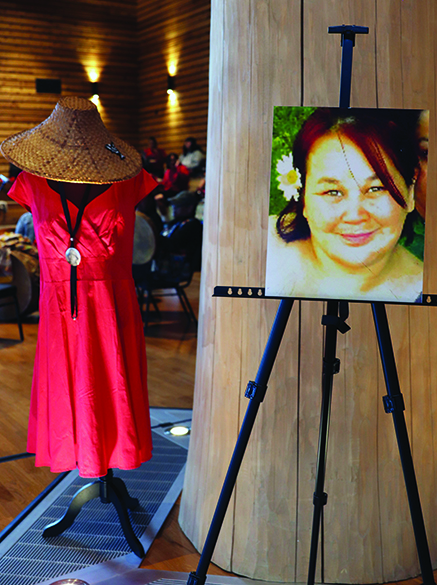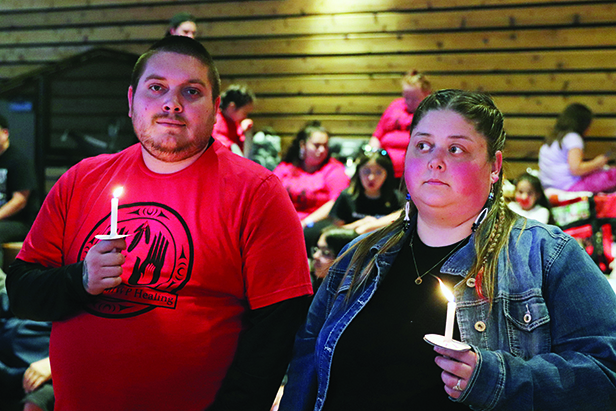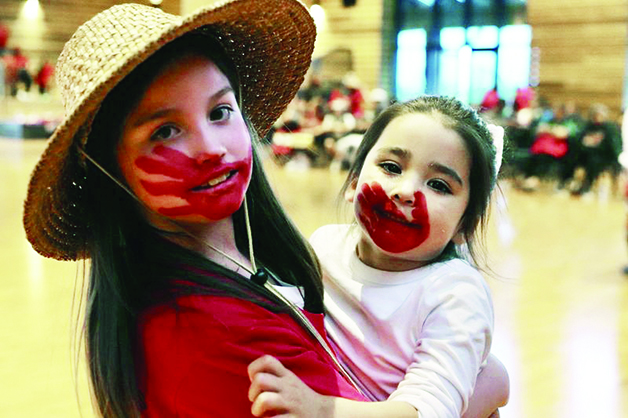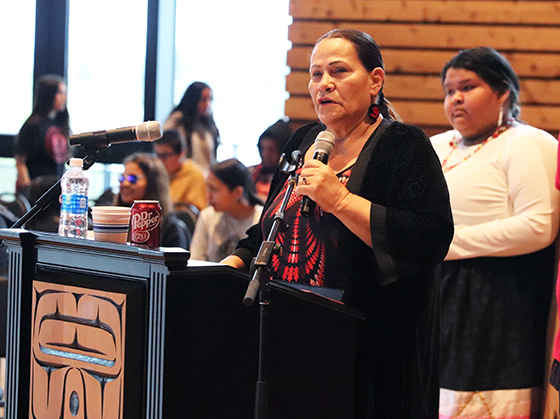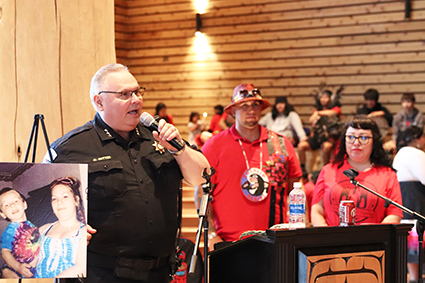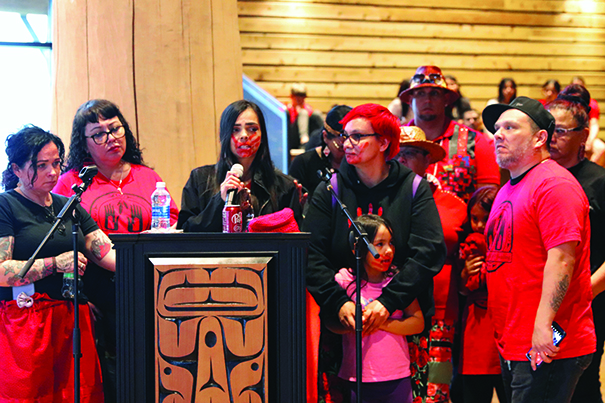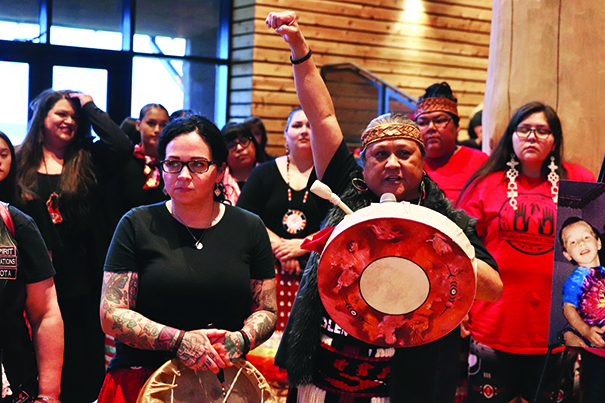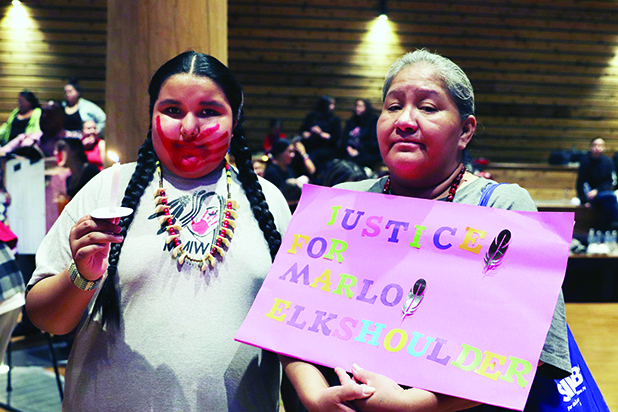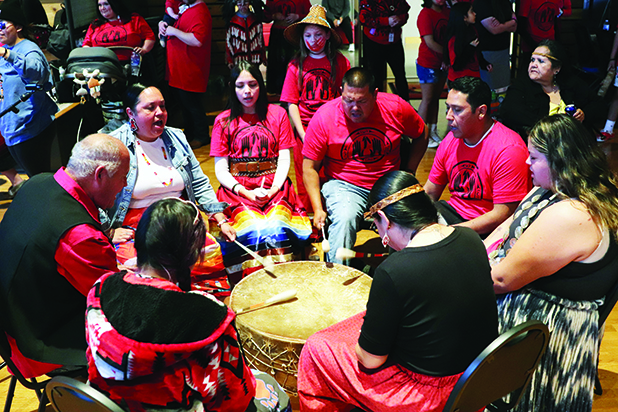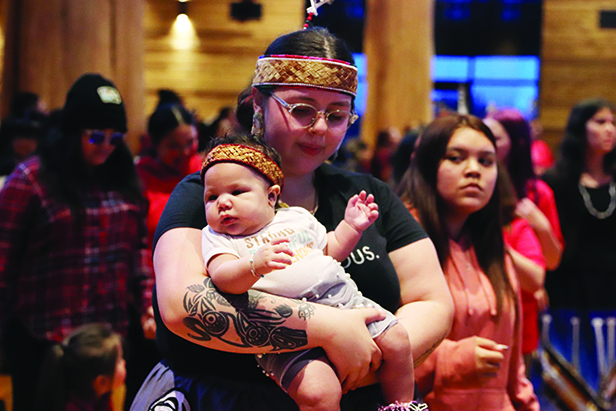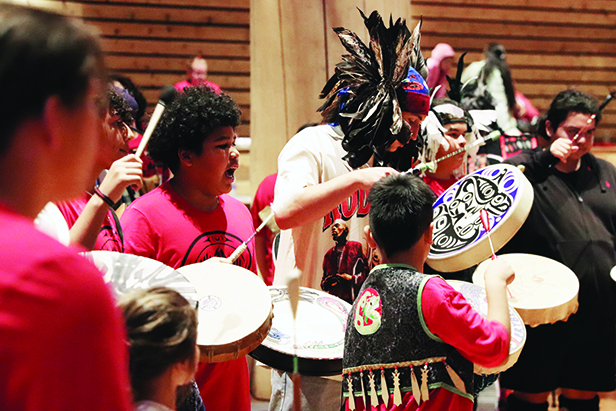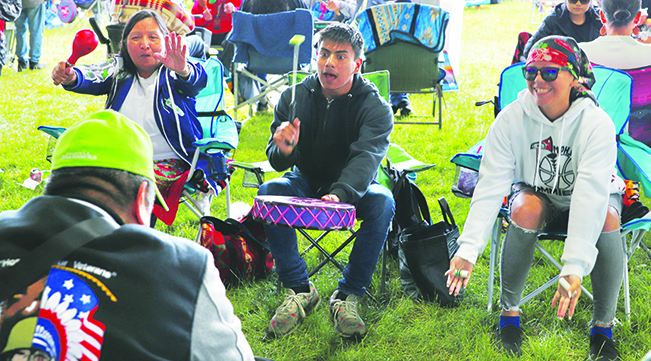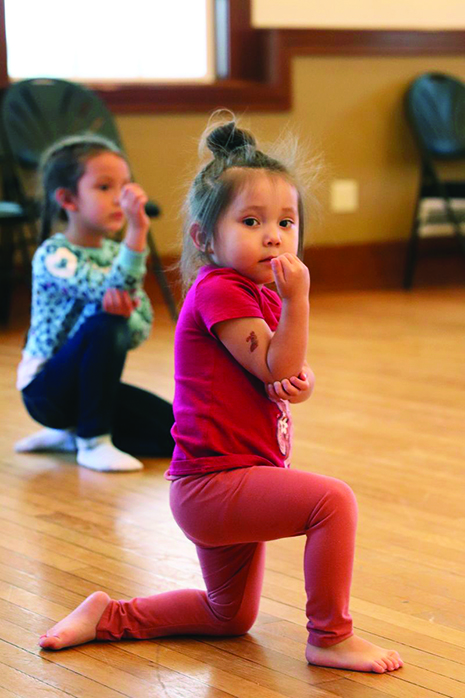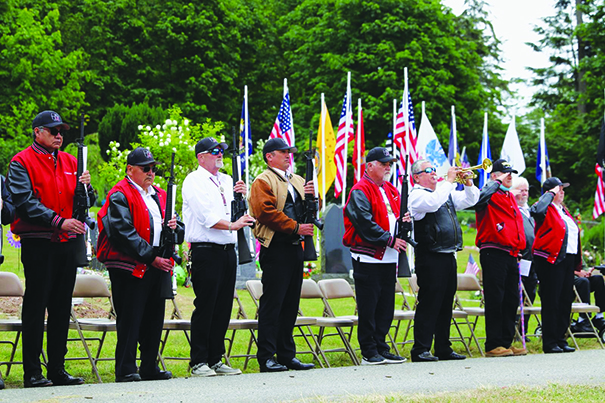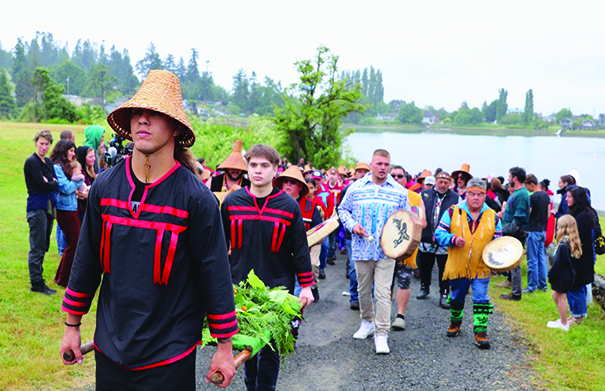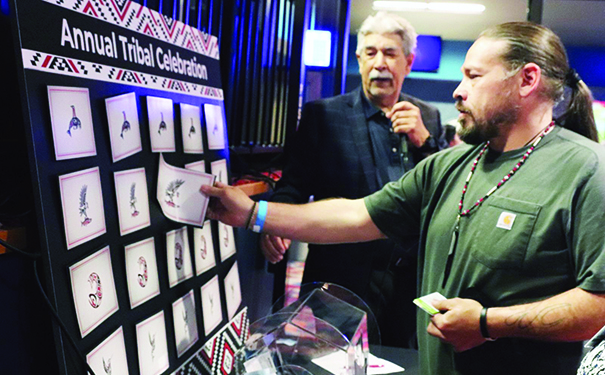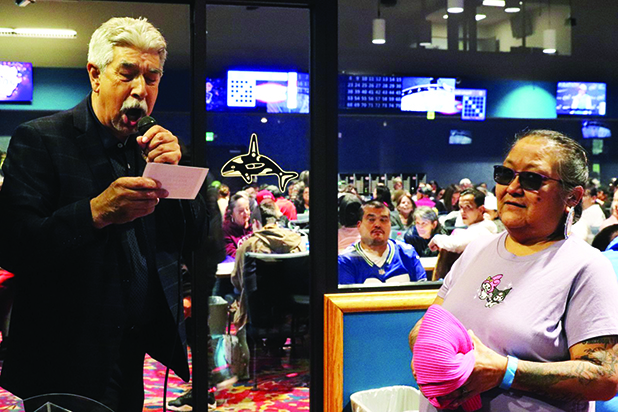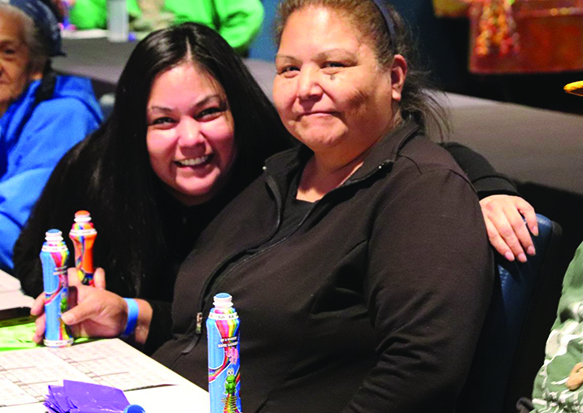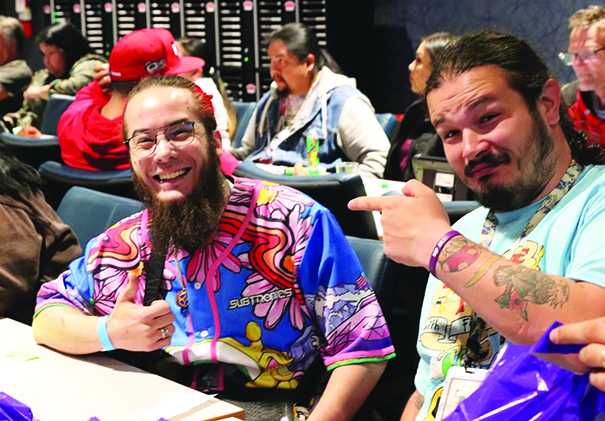
By Micheal Rios, Tulalip News
A short-lived heat wave hit Snohomish County last weekend. Temperatures touched 80° on Saturday, May 11, resulting in many people either staying inside to avoid the sun rays or actively searching for a fun Spring-time experience. Some six-hundred Snohomish County residents weren’t burdened by such trivial things because fortunately they had already RSVP’d to the always exciting and memorable, not to mentioned well air-conditioned, 26th Annual Boys & Girls Club Auction.
Hosted within the Tulalip Resort Casino’s Orca Ballroom, the signature fundraising event of the season was all about giving gracious donors and committed community members an opportunity to paint a brighter future for Tulalip’s children.
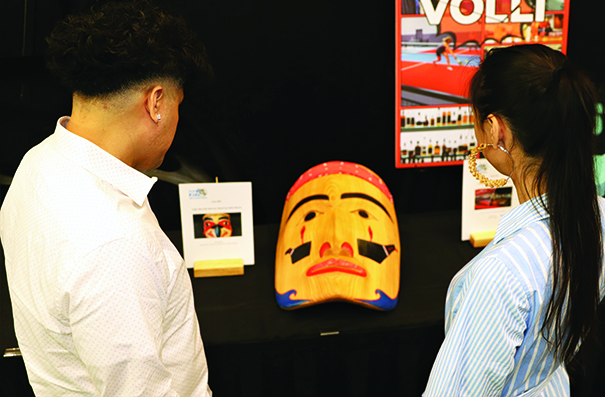
“Many of us have spent unlimited hours at our local Boys & Girls Club participating in sports and learning activities while others remember our local club as a safe place to be surrounded by friends and staff members we trusted,” stated auction chairwoman Marci Fryberg. Marci also serves her Tribe as President of Tulalip Gaming Operation. “Our personal experiences have led to a life-long commitment to an organization that had a positive influence in our lives growing up, and now it is our responsibility to carry that commitment forward.
“Our theme, Woven through Generations, highlights Tulalip’s commitment to family and how our communities work collectively to safeguard the future of the next seven generations. We are honored to celebrate 26 years of fulfilling our mission of promoting health, social, and educational development of our kids. Our club cares for hundreds of kids daily. Magic happens here, as our kids strive to achieve higher levels of learning and personal growth while creating special friendships and bonds that last a lifetime.”
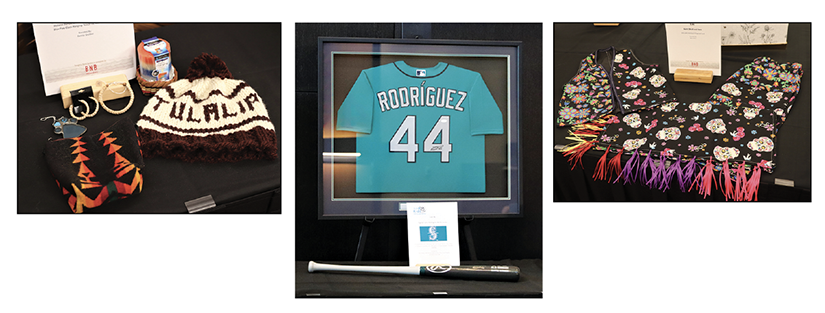
‘The Club’, as it’s affectionately been dubbed by two generations worth of Tulalip youth who attend daily, is a safe place where kids can just be kids. While there, they are routinely exposed to nutrient-dense, healthy food choices, learn useful skills that can be put to work at home or in the classroom, and create an abundance of happy memories that can be remembered later in life.
An example of sovereignty in action, the Club is the first-of-its-kind to be built on tribal land in Washington State. Established over twenty-five years ago, 2024 marks nearly three decades worth of commitment to the community. Through before and after school programs, our reservation’s club aims to help the next generation improve their lives by building a positive self-esteem, developing core values, and adapting critical skills during their foundational periods of growth.
“What an amazing evening to be together with all of you for our signature event that supports the Tulalip Boys and Girls Club,” said Tulalip Chairwoman Teri Gobin to the hundreds in attendance. “The funds raised from this one event truly makes a huge impact on the lives of so many of our kids. We have so many leaders who grew up as club kids and now are professionals working in management positions at both our casinos, Quil Ceda Village, and in many departments of our tribal government. That’s a significant impact the Boys & Girls Club has had on our people.”

Serving as a model for those working to improve the lives of young people in Tulalip and the surrounding communities, our Club is the primary beneficiary of the annual spring time auction. With each auction building off the success of the previous years, the Club has not only been able to sustain services, but also develop and complete much needed campus expansions that add additional learning and activity space.
Funds raised from the annual actions are dedicated for capital improvement, not operating costs. Previous auction funds have paid for a state-of-the-art music studio, a multi-media room with twenty-plus computers, several transportation vehicles, roof repairs, and even a 4,000-square-foot technology-filled extension to better accommodate an ever-growing teenager membership. This teen center has been invaluable since its creation. In uncertain times, local teenagers are able to depend on access to this tech-loaded space to meet their computer-driven demands as 21st century students.
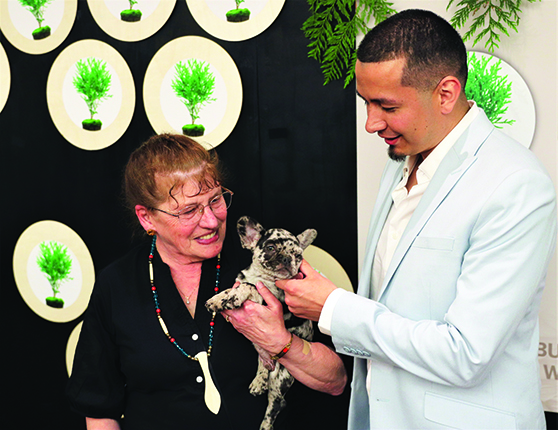
“It’s so funny looking back because I didn’t realize how much the Club meant to me as a kid, but really it was everything,” shared Club Director, Shawn Sanchey. The 28-year-old homegrown Tulalip citizen has come full circle after he himself grew up a Club kid. Now, he manages the same facility so many kids depend on every day. “It’s amazing being able to witness these kids learn and grow in the same way staff once did for me. It really is unique how dedicated our staff are to the community’s youth.”
Embodying his staff’s unique dedication to the community is the legendary Diane Prouty. She’s been safeguarding Tulalip’s club kids for 24 and a half years. She learns every single kid’s name who is a club regular and takes to heart their emotional and physical well-being as if they were her own grandkids. It’s no wonder then that she’s been lovingly referred to as Grandma Diane by thousands of kids at this point. A title she proudly owns.
“All nine of my actual grandkids attended the club, and when they were here they’d of course call me grandma so eventually the other kids did, too. I thought it was just the cutest thing. I had no idea twenty-four years later that would become my de facto name, but I love it because it’s the kids who gave it to me,” explained Diane as she assisted checking in auction guests. “Every year, at this auction, I see former club kids all grown up, who have started families of their own and have kids who attend the club today. Ross and Krisan Fryberg were both club kids. Now, they are married and have had multiple kids attend the club, just like they once did.”
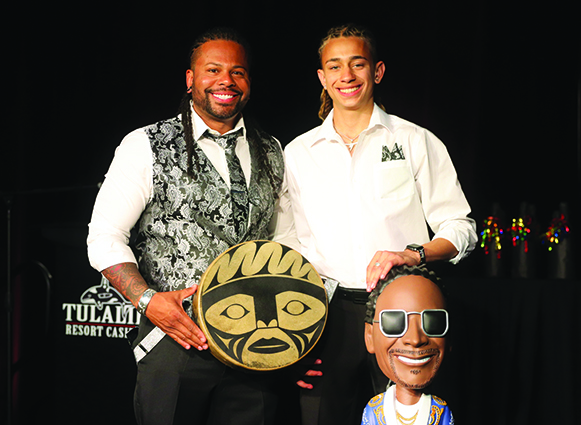
Ross Fryberg Sr. donated a beautiful, handcrafted drum to the live auction. It was brought to center stage by his son, Ross Jr., where it fetched a handsome sum to support a facility both Sr. and Jr. have cultivated many memories.
In total, there were an estimated 600 generous individuals in attendance for this year’s 26th annual auction. Most of these attendees have never been inside Tulalip’s reservation-based B&GC Club. However, the uplifting faces of Club kids were ever-present on marketing materials and projected onto several giant screens bordering the Orca Ballroom. There were also a number of teenagers who volunteered during the auction to help generate support by sharing their wonderful presence and beaming smiles.
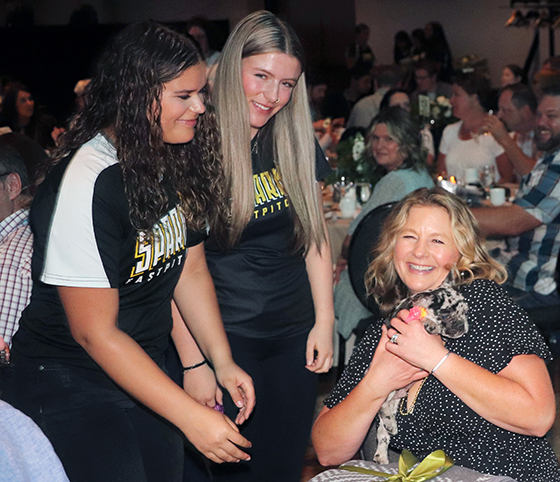
One such teenager was 16-year-old Amaya Hernandez who, during the live auction, was one of the lucky few to roam the ballroom while holding a very special item – a French Bulldog puppy – that generated all kinds of buzz. When auctioneer Mark Schenfeld announced it was bidding time for the adorable pup, amass of bidding cards immediately filled the air. The eventual winner received the French Bulldog hand delivered by Amaya and her Snohomish Spark teammate, Ella Roller.
When the 26th annual action finally came to an end, close to $600,000 was raised between the silent and live auction proceedings. Notably, a generous $25,000 of that impressive sum was raised by U.S. Bank’s Smokey Point branch. The bank staff embraced the celebratory atmosphere and combined their powers to claim top spot in the event concluding dessert dash.

“At the end of the day, this auction is really about building relationships with the community and continuing to build upon the strong foundation of support we have with the Tulalip Tribes, Snohomish County, and the Tulalip Resort Casino,” said Terry Freeman, special event specialist for the Boys & Girls Clubs of Snohomish County. “For twenty plus years now, our goal has remained the same – to create more and more partnerships off the reservation to achieve our goals on reservation. Thanks to our Tulalip leadership team and the leadership teams of so many amazing businesses in Snohomish County, we continue to meet and exceed this goal.”
Thanks to everyone who contributed and gave generously, the 26th annual action was a major success. The generosity and heartfelt support received each year from sponsors and volunteers is overwhelming. As in years past, all funds raised will ensure our local Boys & Girls Club continues to provide quality, growth-focused programs in a fun, safe and positive environment for kids.
